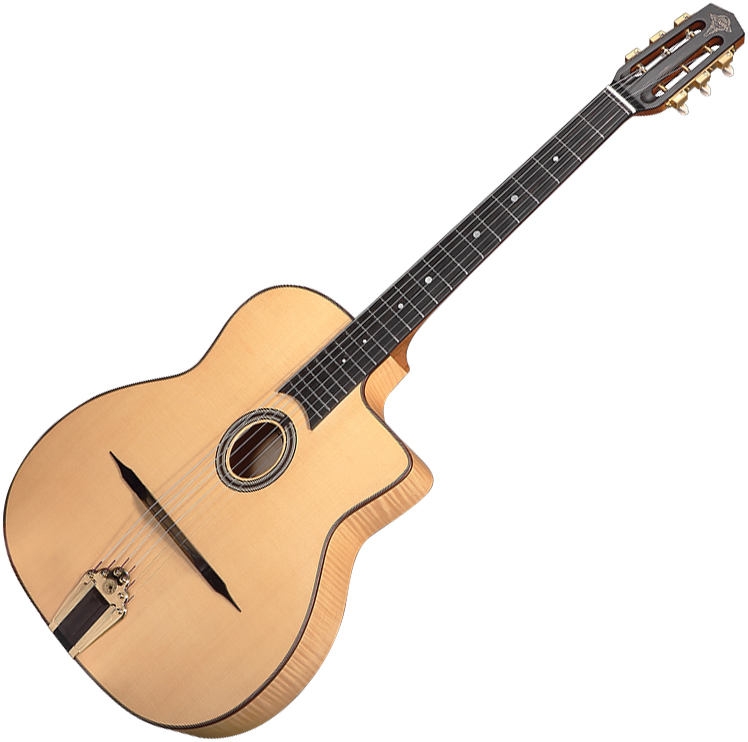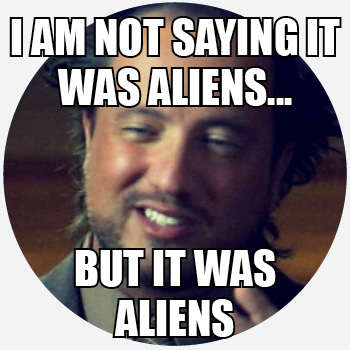-
I like Eric Blackmon's channel. He taught me some important things about funk / R&B guitar.
Now and then he does a video like this, about something so basic many of us never think about it.
I got a song out of this, so I'm happy.
-
03-08-2022 07:43 PM
-
I still don't understand what the dots are for.
-
?? Well there's 5 1/2 minutes of wasted time.

-
I never thought much about this. No, I never thought anything about it.
Since happening on the video above I have looked around for other answers. Everyone says the same thing: they help players find various positions on the neck. To me, that raises a further question: why place them where we traditionally do? Or, which positions are they helping guitarists to quickly find?
-
Well, the markers obviously occur at certain intervals that we use a lot in western music.
My baglama saz has fret markers that work better with the intervals used in Turkish music.
-
Not gonna watch that, but why do gypsy jazz guitars often have a marker at the 10th, not 9th, fret? Looks weird to me.

-
My father once had a cheap Teisco strat copy with dots in that configuration. He wound up removing the dot which was in the "wrong" position and moving it to the "correct" position, because it bothered him. In some ways, the gypsy configuration makes more sense, because it puts a dot at standard note locations for the E strings. Having a dot at Db seems awkward, but I'm used to it. I don't worry much about the markers on the fretboard face, and my Benedetto has none at all. But the side dots are important. I could learn to live with any configuration, but I need something to quickly show me where I am on the neck. AFAIK the main reason markers are where they are is tradition. I think players could learn to use any configuration.
-
Some say it is because these guitars were based on mandolins, which have a marker at the 10th fret. Some also say it is useful for gypsy jazz players, since many songs in the genre have D, G and C bass notes (I do not know if this is true).
 Originally Posted by BigDaddyLoveHandles
Originally Posted by BigDaddyLoveHandles
Maybe we have 1, 3, 5, 7, 9 on a guitar because they show most of a whole tone starting on C or F (11 is unnecessary, since12 is marked). The guitarist can navigate the fingerboard by them. Or maybe they are decorative.
-
I think it is as Mysterious as why the second string is tuned to B and not C in standard tuning.
-
I never thought this would be a question, it is for navigarion at least for me.
In my Eastman there are no markers on the fretboard at all, and I never got used to this, I have navigational issues, the small dots on the side of the neck are not helping. Obviously this is coming form me being amateur... and I am sure it would be gone if it would be my exclusive guitar...
-
The harmonics for a major triad on each string occur at the 12th fret (tonic note), 9th fret (3rd), 7th fret (5th), 5th fret (tonic), and 3rd fret (5th).
Therefore the fret markers are the nodes of each string.
Not sure why mandolin and gypsy guitars moved the 9th fret marker to the 10th fret but I find it very off putting when I’m playing one.
-
I had the same problem when playing my eastman. I solved it by purchasing these dot markers:
 Originally Posted by Gabor
Originally Posted by Gabor
Jockomo 1/4" Dot Fret Markers WT – Musikhaus Thomann
Easy to install, nearly no visible difference to real inlays.
regards
Stephan
-
Think how barres would work (or not work) if the top strings were tuned to C and F instead of B and E.
 Originally Posted by EastwoodMike
Originally Posted by EastwoodMike
-
Ukuleles and (some) tenor guitars are also at 10 rather than 9.
-
What a thread! Deepest mysteries solved!

-
Couldn't tell you, but it really messed with my mind when first I played a GJ guitar, after so many years of playing with a tenth-fret marker.
 Originally Posted by BigDaddyLoveHandles
Originally Posted by BigDaddyLoveHandles
I've always assumed fret markers were arbitrary in their placement, just something to help you know where you are.
Not sure if that video in the OP is satire or not ...
-
Open - Root
3rd fret - m3rd
5th fret - 4th
7th fret - 5th
10th fret - b7
minor pentatonic all laid out for you.
-
IMO, They are just symmetrical patterns, in number of frets, from 12th fret up and down.
If you move dot to 10th fret, you have the symmetry from 11th up and down (or, down from 10th and up from 12th, with 11th in between).
If you look at it as if there was some musical theory behind it, with dot at 10th fret, dotted frets correspond to out of key notes ("black keys"),
while undotted frets are major scale notes ("white keys"), starting from 9th fret, all on one string. Dotted frets ("black keys") form pentatonic scale 1 b3 4 5 b7, starting from 12th/ open string.
With dot on 9th, dotted frets are Mixolydian pentatonic (1 2 3 5 b7), starting on 5th fret ("white keys" in corresponding major/ Ionian, less 1 and 3).
-
Banjos usually have the fret marker at the 10th and not the 9th fret.
-
Chet Atkins said something to the effect "Blessings upon whoever stuck that Major Third in" and I agree. The instrument would be a lot less fun without it!
 Originally Posted by EastwoodMike
Originally Posted by EastwoodMike

-
That video has to be a joke. If not, probably the best bit of pointless guitar pontificating I've seen, I only watched about 10 seconds of it though at various points in the video.
Fret markers could be anywhere as long as you are used to them, it's just a visual aid. I just assumed that they were where they are to form a visual pattern for easy navigation, I dont care about intervals or harmonics that they may or may not denote.
But you do need them. I bought a 20 quid beach guitar when I was abroad years ago with no fret markers at all. First thing I had to do was take a knife to to fretboard and scratch them on.
That guitar incidentally has a beautiful rickity sound, near identical to that on Nirvana's Polly. It can only be the scratched in fret markers giving it such a unique tone.Last edited by KingKong; 05-04-2022 at 04:01 PM.
-
That's a funny quote because so many Chet songs have him holding a c note on the b string all the way through.
-
If it doesn't have a vine with a ton of leaves on it I get lost easily

-
My teacher, when I was like, 13, told me it was the harmonic node points.
I never questioned it. Why y'all here trying to make me think?
-
 Originally Posted by Dsd
Originally Posted by Dsd





 Reply With Quote
Reply With Quote



I found this rarity,
Today, 03:05 PM in Guitar, Amps & Gizmos